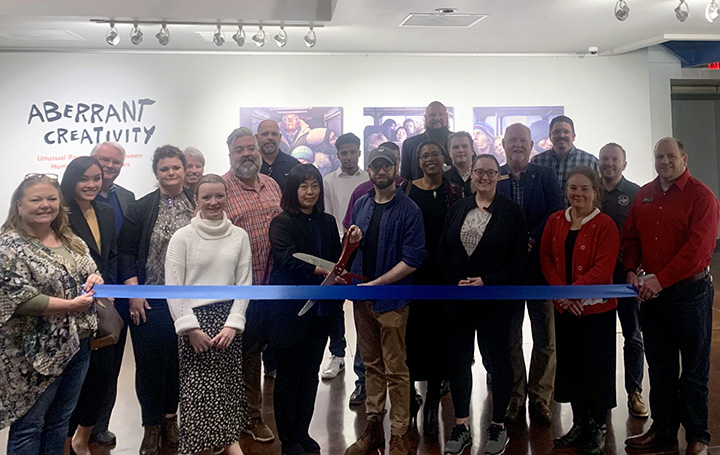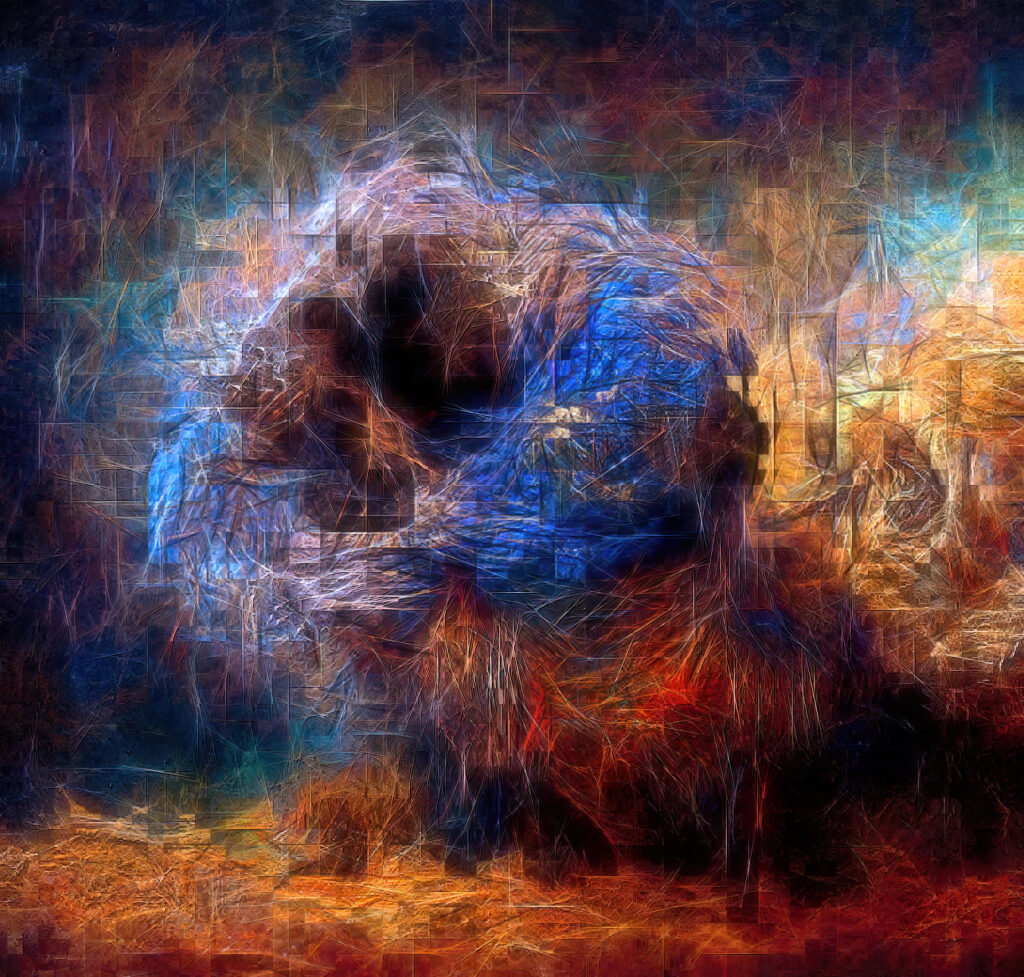‘Aberrant Creativity’ Exhibition Sparks ‘Lively Dialogue’ About AI And Art

The international art exhibition “Aberrant Creativity: Unusual Partnerships Between Humans and Machines,” will close on Thursday at the Arts Council of the Brazos Valley. The exhibition is a collaboration by the Institute for Applied Creativity in the Texas A&M College of Performance, Visualization and Fine Arts and the Arts Council.
“Aberrant Creativity” focused on creative uses of artificial intelligence in the process of making art, and attracted submissions from across the globe. Twenty-seven pieces were selected among 225 submissions. The exhibition also showcased the works of three globally recognized artists known for their innovative use of artificial intelligence in art: Lev Manovich, Steve DiPaola and Eunsu Kang.
Caleb Kicklighter, instructional assistant professor in the Visualization program and one of the judges for the show, said the rise of artificial intelligence-generated art has made many artists uneasy about what is to come. The exhibition was a chance for participating artists to respond to these changes, he said.
“Artificial intelligence is a controversial topic right now, and for good reason: AI is already disrupting how creators around the world make and interact with art and media,” he said. “We, the curators of the exhibition, can’t adequately define a proper or ‘correct’ relationship between art and AI, because it is so new and is ever-evolving. And frankly, it’s not our place to do so. However, this exhibition demonstrates a particular type of relationship we were interested in exploring, which is ‘creative partnership.’”

The exhibition aimed to explore the boundaries between machines and humans, said Dr. Jinsil Hwaryoung Seo, director of the Institute for Applied Creativity.
“I was particularly thrilled to observe that this event sparked a lively dialogue among general gallery visitors about the intersection of AI and art,” she said. “This engagement highlights the exhibition’s success in not only showcasing the wonders of technology and creativity, but also in stimulating thoughtful conversations among a diverse audience.”
Projects were chosen based on how the creators chose to collaborate with their machine counterparts, Kicklighter said.
“It’s illuminating to hear where the artist decides to interrupt and enforce their creative vision and when they let the generative process share its ideas and explore new, strange or unpredictable directions,” he said.
Kicklighter said the hope was to bring new perspectives to show how “creative workflows can be affected by artificial intelligence or machine learning.”
“I believe that the works that were selected accomplished just that,” he said. “We had digital illustrations, musical pieces, a playful interactive piece, 3D prints, videos and even a taxidermized artwork piece. Each artist had a different outlook on how the generative machine partner fits into the process of creation.”
Winners were announced during an opening reception on Dec. 7: “A Walk to Meryton” by Arne Eigenfeldt received Best in Show. “27” by Stefanos Schultz received the Aesthetics Award. “Blink” by Laura Hyunjhee Kim and Chris Corrente received the Creative Process Award. “Raising my Body” by Clodagh Molly Delahunty-Forrest received the Innovation Award. “A Meal For the Rest of Your Life” by Maricel Reinhard received Best Student Work.
Catch the final days of the exhibit Tuesday through Thursday from 10 a.m. to 6 p.m. at the Arts Council of the Brazos Valley, 4180 Texas 6 Frontage Road. A virtual twin of the exhibition will be hosted online in 2024.

Top photo: Dr. Jinsil Hwaryoung Seo and Caleb Kicklighter (center) at the Dec. 7 ribbon cutting for “Aberrant Creativity” at the Arts Council of the Brazos Valley. Photo by Bailey Brown.